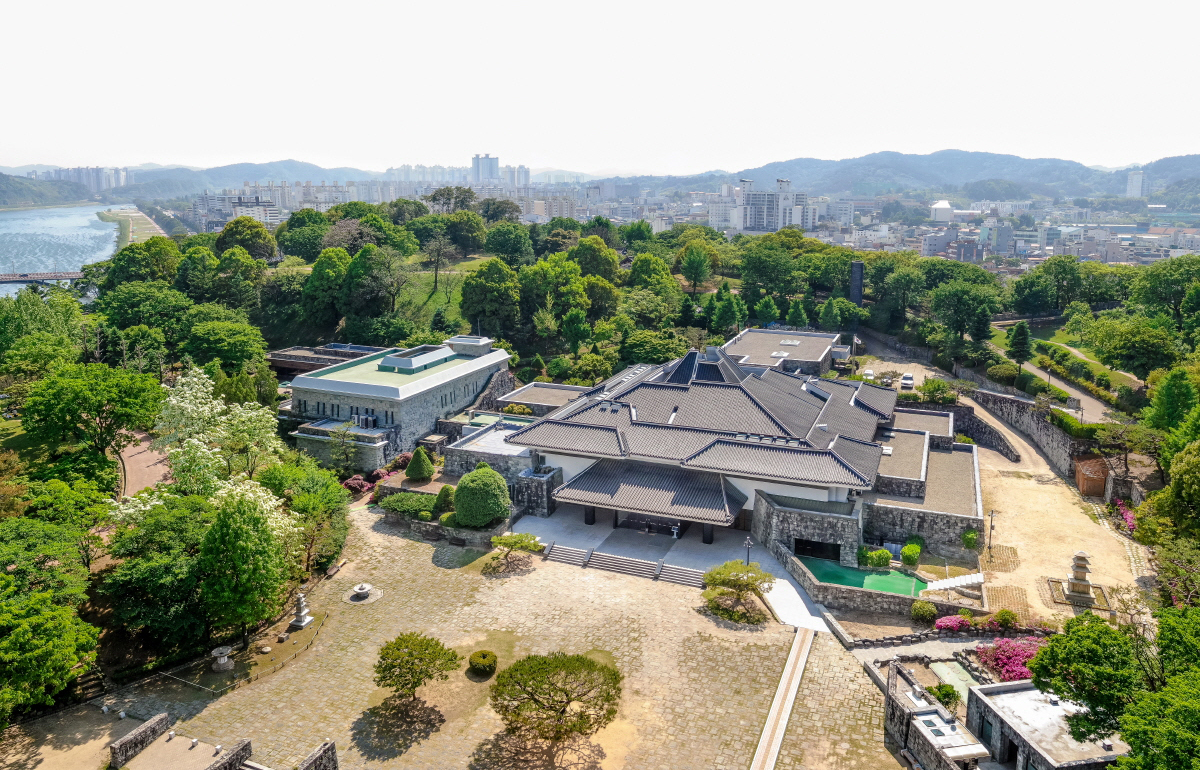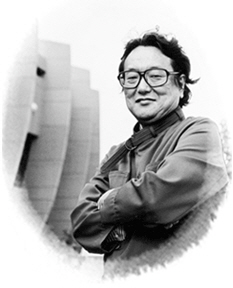Main Building
Building Information

- Year of completion1979
- LocationJinju National Museum, 626-35, Namgang-ro, Jinju-si, Gyeongsangnam-do, 52692
- Lot area17,930.66㎡
- Building area2,727.29㎡
- Gross floor area4,948.78㎡
- Floors1B 2F
- StructureReinforced concrete
The Jinju National Museum located inside the Jinjuseong Fortress wall located near the Namgang River in Jinju required a carefully thought out design that took the fortress into consideration. Therefore, it was designed to be lower than the surrounding terrains and the roof and other structural members were segmented to avoid giving a massive, overwhelming appearance, while pearlstone was used as the main material for the joining areas so that it would appear to be in harmony with the surrounding landscape. Inside the building, visitors are funneled into the second floor from two halls and brought on to the first floor
Architect Information

Kim Swoo-geun, the founder of the Space Group and the SPACE magazine, was born in Cheongjin in 1931 and passed away
in Seoul in 1986
In his lifetime, he designed more than 200 buildings displaying architectural excellence,
and he is considered one of the greatest architects in the modern architecture history of Korea along with Kim
Joong-eop
Kim Swoo-geun who masterfully brought together land, space and structures in his architectural
designs founded Korea’s first monthly arts magazine titled 「SPACE」 in 1966 in an effort to document and promote
Korean culture. In addition, he led the cultural movements in Korea through Gonggan-sarang (lit. Space Love, 1979)
and Gonggan-hwarang (lit. Space Gallery, 1972). This is why he is touted as not just a celebrated architect but as a
cultural activist who endeavored to integrate various forms of the arts centering on architecture